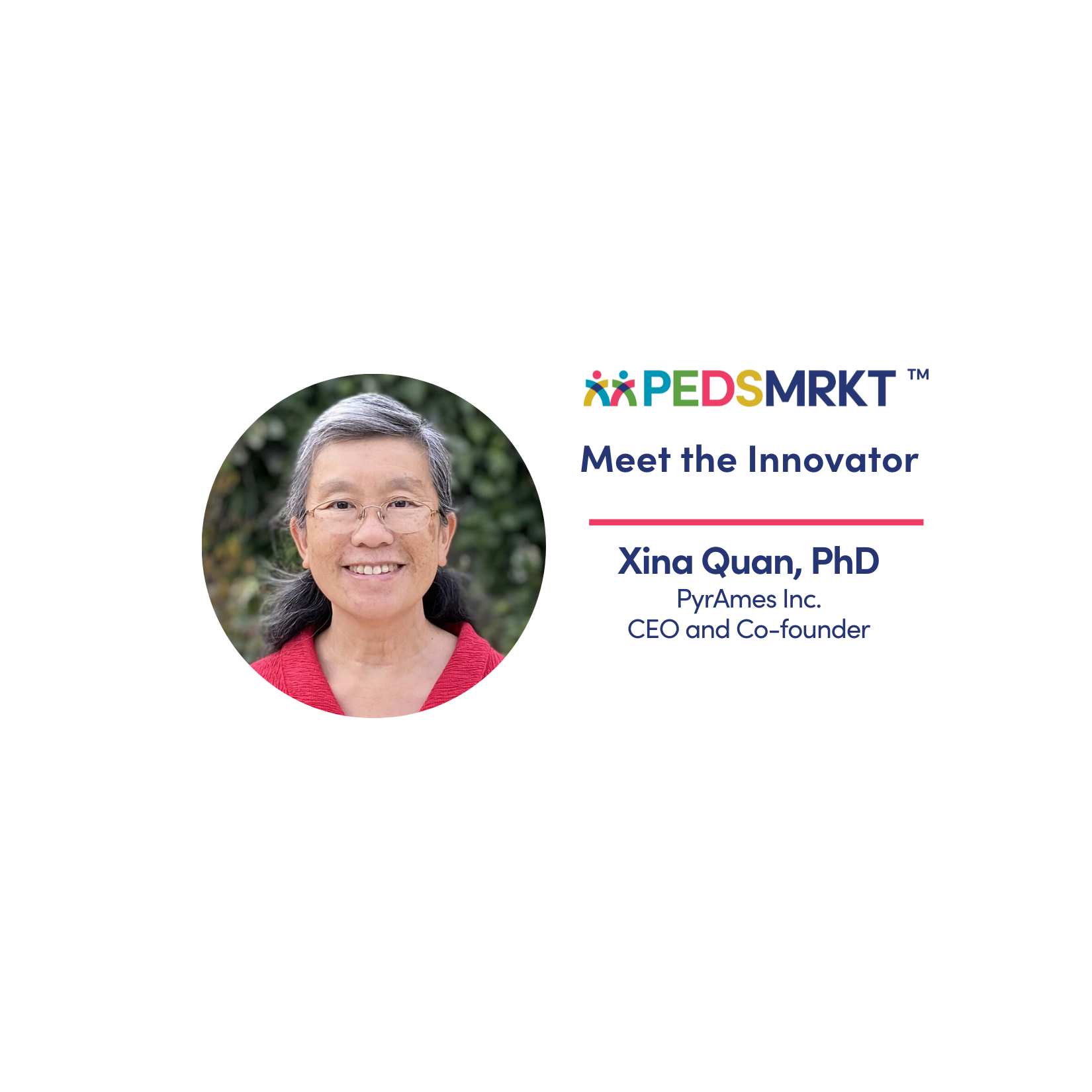Log in
Log into your PedsMrkt account to access our Community forums.
If you don't see an email, please check your Junk folder. The email will be sent from support@pedsmrkt.com
Log into your PedsMrkt account to access our Community forums.
If you don't see an email, please check your Junk folder. The email will be sent from support@pedsmrkt.com

Organization: PyrAmes Inc.
Roles: CEO and Co-founder
Area(s) of Innovation: Continuous, non-invasive, wearable, and wireless blood pressure monitoring for neonatal critical care
Description: PyrAmes is a digital health company focused on transforming the delivery of health care through advanced sensor measurement. We have developed a proprietary platform to provide continuous blood pressure monitoring that is accurate, wireless and non-invasive.
Website: PyrAmesHealth.com
Innovation & description of innovation:
Boppli® is an accurate, non-invasive, low risk, and easy-to-use solution for continuous, non-invasive blood pressure (cNIBP) monitoring of babies in NICU, PICU, and CVICU critical care settings. It reports systolic, diastolic and mean arterial blood pressure (BP) values comparable to invasive arterial lines (IALs). It has been cleared by the FDA as a potential alternative to IALs and inflatable cuffs when used in conjunction with SpO2 monitoring and is the only such device cleared for infant use. Boppli’s cutting-edge neonatal-care technology reduces neurostimulation, leverages AI/ML technology, and is effective for extremely low birthweight or low gestational age neonates. Boppli’s first clinical use occurred at the Tufts Medical Center NICU in May 2024.
The Boppli Band is a single-use, battery-powered BP monitor that uses a thin, flexible sensor array which is placed with extremely light skin contact against a palpable pulse point on the arm or leg. It wirelessly pairs with the Boppli Bedside tablet to enable live display of BP and pulse rate (PR), updated as frequently as once per second. The tablet also allows review of recorded BP and PR data over time. Boppli is produced under a license from the State of California to manufacture medical devices at the PyrAmes facility in Cupertino, CA.
How are you advancing pediatric innovation?
More convenient and cost-effective BP monitoring potentially results in better BP management, leading to health benefits and healthcare cost reductions. PyrAmes’ comfortable, easy-to-use, wearable Boppli device for BP monitoring offers the possibility of a new standard of care for determining blood pressure, a biomarker which informs almost every medical interaction.
Boppli’s innovative sensor technology enables physicians to observe blood pressure changes in real-time compared to cuffs, allowing better informed and more timely patient care decisions. It eliminates risk of nerve injury, tissue necrosis, and infection compared to IALs and reduces risk of ischemic damage from restricted blood flow associated with frequent cuff use. It is the only such device cleared by the FDA for infant use and has been used on infants as tiny as 0.4 kg and with gestational age down to 22 weeks, 1 day.
How does your innovation impact patients or pediatric care?
Boppli provides a new option for obtaining timely, accurate BP values with lower risk of complications.
Babies experience less pain and distress, leading to more accurate results. Wireless operation facilitates kangaroo care. Clinicians benefit from the opportunity to non-invasively observe changes of blood pressure in real time, allowing better informed and more timely patient care decisions. Hospitals experience lower cost and less risk of adverse events since nurses can easily place the Boppli without the support services needed to place arterial catheters, and they spend less time taking cuff measurements, increasing opportunity for more effective care.
Boppli also results in clinical workflow efficiencies. Its ease of placement provides quick results; it is effective on either radial or dorsalis pedis pulse points. It can passively take BP measurements without perturbing the patient for long periods of time. Untethered use due to wireless monitoring creates additional workflow efficiencies and facilitates kangaroo care.
What barriers did you have to overcome to make this impact?
Several, including the COVID pandemic pausing our clinical studies for over a year. Beyond the usual engineering challenges of translating a new invention into a Class II medical device, we faced typical regulatory and currently commercialization challenges. Our FDA breakthrough device designation in 2020 certainly helped with our regulatory pathway. Our commercial challenges stem from the fact that Boppli is not a direct replacement for an existing product, rather, it is an alternative to current standards of care. While clinicians immediately see the benefit of Boppli, institutions typically have an arduous, committee-based process for validating new solutions like ours.
How did collaboration and breaking down silos help you make this impact?
Our clinical partners and ProximaCRO were instrumental in guiding us through the pivotal clinical study, where we demonstrated the accuracy of Boppli. Beyond clinically validating our device, their usability guidance was instrumental in finalizing Boppli.
How can this innovation make an even greater impact?
We are actively working on extending the indications for use to larger babies above 5 kg and for additional clinical settings. We’re also working on validating Boppli for medical transport. We are translating our technology to maternal health – both prenatal and postpartum applications. Finally, we are working on outpatient applications, to address the needs in emergency care and aging-at-home for seniors.
What advice would you give others who are innovating in pediatric healthcare?
Network with other medtech innovators – share your challenges, ask their advice, and learn from their experience. Medtech innovations address a very wide variety of patient populations and clinical conditions. However, there is an incredible amount of similarity in the challenges we face, and it’s surprising how much we can learn from one another.
Anything else you would like to share?
We are immensely grateful to everyone who helped us get to this point – clinicians, investors, advisors, other medtech companies. Everyone has been so generous with their time and expertise, particularly those associated with pediatrics. It has been wonderful to work with people who care so much about improving lives.